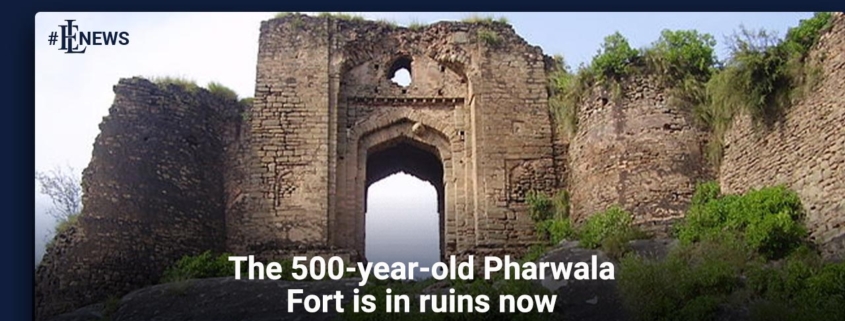The 500-year-old Pharwala Fort is in ruins now
RAWALPINDI: The 500-year-old Pharwala Fort in Kahuta tehsil of Rawalpindi, which was once thought to be the most impregnable fort because of its high ridges and deep ravines, is now in ruins because it hasn’t been taken care of.
The national heritage fort’s defence wall and five of its six entrance gates are no longer there. The 450-acre fort is a very important part of the history of the subcontinent. People in the area were also upset that the historical heritage was being destroyed. Tombs on the grounds of the 16th-century fort are also in bad shape.
Read more with EL news: CDA and wildlife board at odds over Islamabad hiking trail
The Pharwala Fort is in Kahuta Aliot, which is only 40 kilometres from Rawalpindi. It is a treasure that most people in Rawalpindi and Islamabad have forgotten about.
In the past, the Ghakhar empire ruled the area where the Phirwala Fort is now. Its borders went from Kallar Kahar, Jhelum, and Kallar Syedan to Dudyal Azad Jammu and Kashmir, Rawalpindi to Attock, and Hazara to Kohistan.
People thought of the fort as the defence headquarters, and it could hold 500 soldiers, 50 elephants, and 100 horses. Tradition says that in 1515, the Mughal emperor Babur took over the fort, which was thought to be the stronghold of the Gakhar clan.
On one side of the fort is the Himalayan mountain range. On the other side is the Sawan River.
A local man named Hafeet Ghakhar said that maintaining the fort is unlikely because no department has built a separate road to get to the fort from Aliot. This is why the fort has become a ghost house. “Even if tourists wanted to visit the fort, there is no road to get here. The only way to get here is on foot through difficult mountain paths,” he said, adding that the fort has fallen apart on the inside and the outside, and the walls that protected it are gone.
He said that the crumbling of the fort’s defence walls is making it harder and harder to find signs of the fort. The compound used to be where horses and elephants were kept, but now buffaloes and goats live there.
Several houses that are close to the fort have built on its land. The main gate, which was used for elephants and horses, is still there, but the other five gates have been completely destroyed.
Locals say that because the fort is so important to history, they have sent several letters to the department of archaeology asking them to make it a national heritage site, but they haven’t heard back. Guard rooms from the 15th century can still be seen at the Pharwala Fort.
On the grounds of the fort, there are also 10 to 15 graves that are thought to belong to the Sultans of Ghakhas at the time. Several attempts were made to get the view of the Punjab Archaeology Department on why Pharwala Fort was in such bad shape, but no one was willing to say what they thought.



